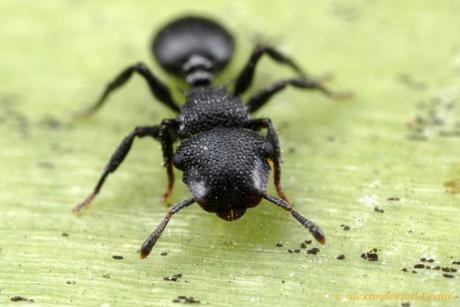
Visit the site to see the interactive map. The photo is of an Arizona Turtle Ant. “The goal of antmaps.org is to provide an intuitive and efficient framework for professional and amateur myrmecologists to visualize the known distribution of ant species or higher taxon, and to access the underlying records for those data.
Antmaps.org is not a database per se, but rather a client-end tool for visualizing and interacting with the GABI database. The Global Ant Biodiversity Informatics (GABI) project (Guénard et al. In Review) is an ongoing effort to consolidate and curate a comprehensive global database of ant species distributional records, including literature records, museum databases, and online specimen databases. The database includes records from over 8400 publications, most major digitized museum collections, and specimen databases such as Antweb. In total, the database now has over 1.6 million records including around 15000 described ant species and subspecies. The GABI data are currently housed in a PostgreSQL database that syncronizes once per week with antmaps.org.”
Sourced through Scoop.it from: antmaps.org
I once wrote that ants are the dark matter of terrestrial ecosystems. Ants include about 25% of all animal biomass on Earth’s lands. Their complex ecosystem interactions are essential for natural stability and productivity.

